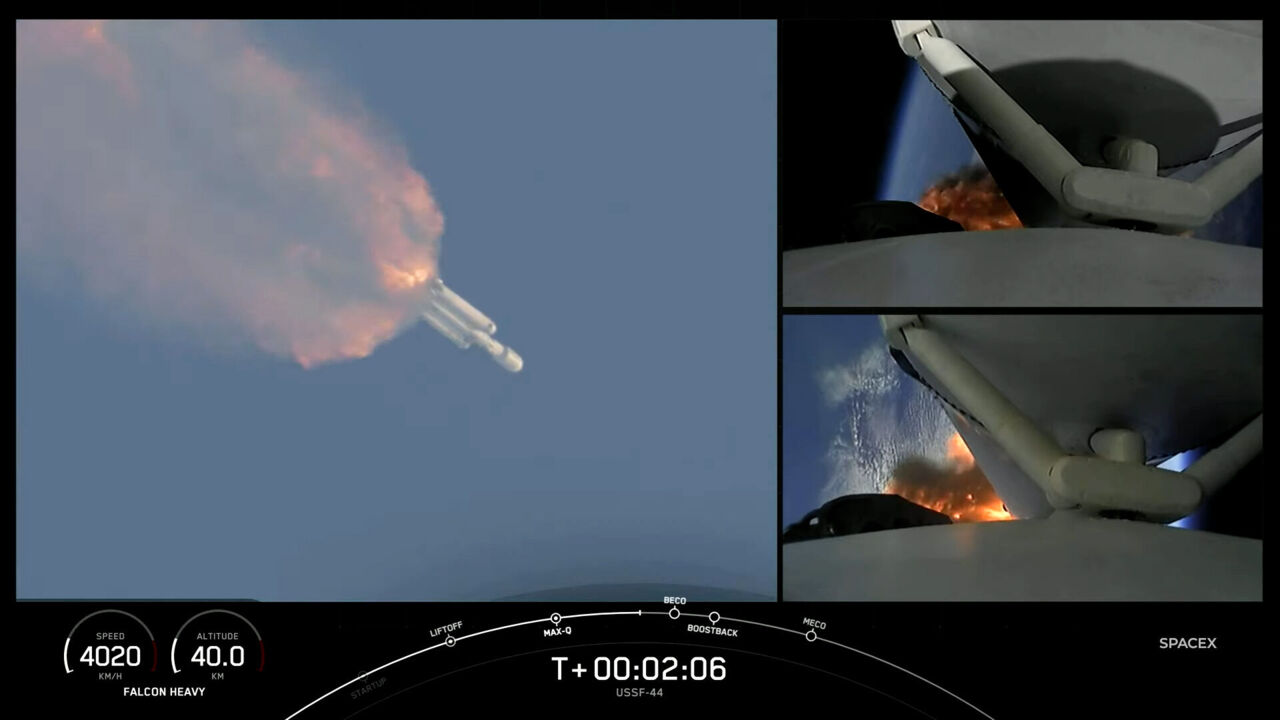
SPACE GOT A LITTLE MORE CROWDED THIS WEEK. BOTH THE UNITED STATES AND CHINA LAUNCHED ROCKETS AS COMPETITION BETWEEN THE TWO NATIONS INTENSIFIES.
SPACEX’S FALCON HEAVY LAUNCHED TUESDAY FROM THE KENNEDY SPACE CENTER IN FLORIDA.
FALCON HEAVY’S PAYLOAD INCLUDED TWO SATELLITES. MOST OF THE DETAILS AROUND THE SATELLITES ARE CLASSIFIED, BUT WE DO KNOW THEY BELONG TO THE US SPACE FORCE. ONE IS NAMED TETRA-1, AND IS A MICROSATELLITE BUILT FOR PROTOTYPE MISSIONS IN AND AROUND GEOSYNCHRONOUS EARTH ORBIT.
TUESDAY’S LAUNCH WAS JUST THE FOURTH TIME THE FALCON HEAVY LEFT EARTH.
THE SPACEX FEED OF THE LAUNCH ENDED WITH A NOW SOMEWHAT FAMILIAR SITE, ROCKETS GUIDING THEMSELVES SAFELY BACK TO EARTH.
IT’S A FAR CRY FROM SOME CHINESE ROCKET LAUNCHES, WHICH ENDED IN ROCKETS FALLING UNCONTROLLABLY FROM THE SKIES.
BUT, THANKFULLY, THERE WERE NO CRASHES THIS WEEK WHEN CHINA SENT A LONG MARCH-5B ROCKET INTO SPACE WITH THE THIRD AND FINAL MODULE FOR CHINA’S SPACE STATION.
THE MODULE REPORTEDLY ARRIVED AT THE STATION EARLY TUESDAY MORNING.
THE PEOPLE’S LIBERATION ARMY, WHICH OVERSEES CHINA’S SPACE PROGRAM, SAYS THE MODULE IS A LABORATORY AND THE SINGLE LARGEST MODULE IN SPACE.
IT WILL PROVIDE CHINESE ASTRONAUTS ROOM FOR ZERO GRAVITY EXPERIMENTS. IT HAS AN AIRLOCK FOR EXPOSURE TO SPACE’S VACUUM, AND IT HAS A ROBOTIC ARM TO HELP WITH EXTRAVEHICULAR PAYLOADS.
SINCE CHINA’S SPACE AGENCY IS RUN BY THE MILITARY, THE COUNTRY WAS EXCLUDED FROM PARTICIPATING IN THE INTERNATIONAL SPACE STATION.
DESPITE THAT, THE CHINESE ARE COLLABORATING WITH THE EUROPEAN SPACE AGENCY AND THE UN OFFICE FOR OUTER SPACE AFFAIRS ON A NUMBER OF PROJECTS RANGING FROM AEROSPACE MEDICINE TO MICROGRAVITY PHYSICS.










